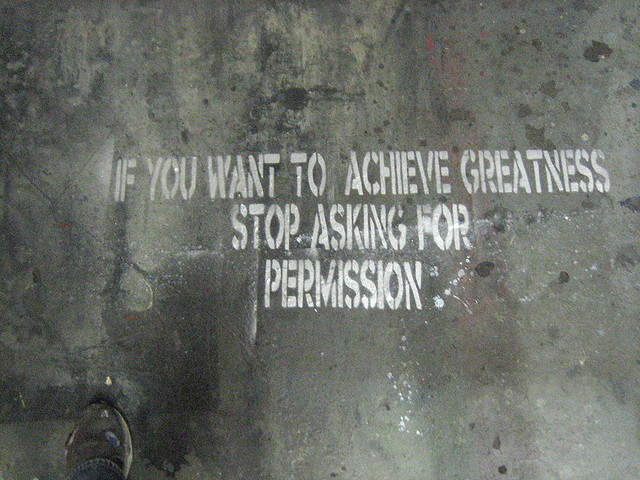 This Tuesday I went to the Lead On Women’s Conference. And while I was excited to go, part of me wanted to stay home. Why? So.Many.People.
This Tuesday I went to the Lead On Women’s Conference. And while I was excited to go, part of me wanted to stay home. Why? So.Many.People.
Worse than that, actually. So many people I don’t know.
But I volunteered to be one of the coaches in the “Coaches Corner” (offering speed coaching sessions to attendees) and I didn’t want to let anyone down. And I wanted to see Brene Brown and Hilary Clinton live (because how often do I get to do that?). So I pulled myself together and went.
Do you ever feel like you’d rather stay at home?
As an introvert and/or HSP, chances are you sometimes feel anxious or overwhelmed at the thought of going somewhere new like a conference where thousands of other people will also be. The chatter, the lights, the sea of booths. It’s a lot.
But whether for work or for fun (as in you want to go), chances are you’ll at some point need to pull yourself together and go to a conference (or concert or other large event that can induce heart palpitations).
Here are some things you can do to make the experience easier and dare I say, fun?
-
Go at your own pace.
When we go places with large groups of people all there to do the same thing, it is really easy to a) think you need to go with the frenzied flow and b) worry you might miss something if you don’t. But FOMO is the enemy.
For sure, get outside of your comfort zone, but don’t go so far that you end up out of your tree. There is a happy place for you somewhere in between “I’m going home” and “I’m going to meet 1,000 people and go to every breakout session.” Find the place where you can be at the conference without being overwhelmed by it. It is possible. -
Remember why you came.
This is for those moments when you feel like chickening out, packing up, and giving up. You spent the money (or your company spent money for you) to be there, there must be a reason. What did you come to get? Who did you want to meet? Keep your goals and your purpose in mind, and it will be easier to stay when the sea of people overtakes you.
-
Take breaks and hydrate!
Take care of yourself. Period.
Whether that’s stepping outside during a break to enjoy a moment of peace and sunshine, or carrying a water bottle and snack so that you avoid the afternoon hanger (hungry+anger). Oh, and wear comfortable shoes, yeah? -
Start a conversation with someone. They might be just as nervous as you are.
This is my favorite tip, and one that I remind myself of often, because the truth is that large groups of unknown people can be intimidating to lots of people (yes, even some extroverts). But while we are all focused on our own anxieties and discomforts, it’s easy to forget that that woman who is sitting next to you at lunch who is also alone might love a friendly face. Why not make it yours?
(It’s not like you have to promise to be besties forever and ever… or even the rest of the conference. It’s just hello.) -
Take a deep breath and have fun!
You get to choose whether you have fun or not. And given the choice, why not choose fun?
That said, when anxiety or nerves are involved, breathing helps. It may sound like a flippant to say “just breathe”, but it is amazing how much a deep, centering breath can do (granted, sometimes it takes more than one).
There’s nothing you have to prove to anyone (not even to yourself). And you get to have fun because I said so. Kidding. You get to have fun because it’s your prerogative. (Anyone else hearing Bobby Brown all of a sudden?)
And at the end of the day, you get to go home and cuddle with your cat.
Or dog. Or human. Or remote.
 At the conference on Tuesday, I coached 9 women leaders (each session was about 20 minutes). Then I sat among thousands of women (and a few men) and listened to Brené Brown weave her stories with research and poignant vulnerability and to Hilary Clinton mesmerize and inspire with her passion, commitment, and humanity.
At the conference on Tuesday, I coached 9 women leaders (each session was about 20 minutes). Then I sat among thousands of women (and a few men) and listened to Brené Brown weave her stories with research and poignant vulnerability and to Hilary Clinton mesmerize and inspire with her passion, commitment, and humanity.
Bonus: I got to visit a little with some of my coach-friends who I don’t see very often. So all-in-all it was a fantastic day, and I was glad that I didn’t listen to the voice that wanted to stay in bed and hide.
And when I got home, I changed into the comfiest clothes I own and cuddled with Raven in the quiet of my bedroom. Exhausted, at the edge of overstimulated, and completely satisfied.
What did I forget on the list?
Let me know in the comments what you would add to this list of tips for introverts and HSPs attending large conferences.









